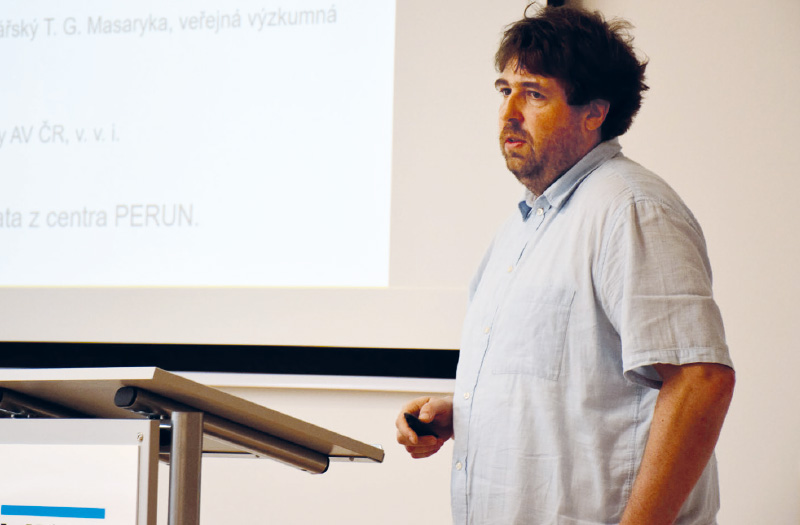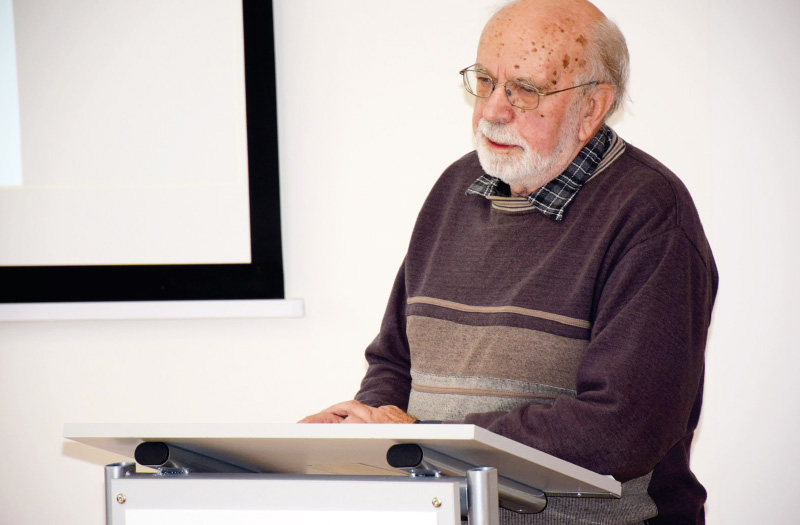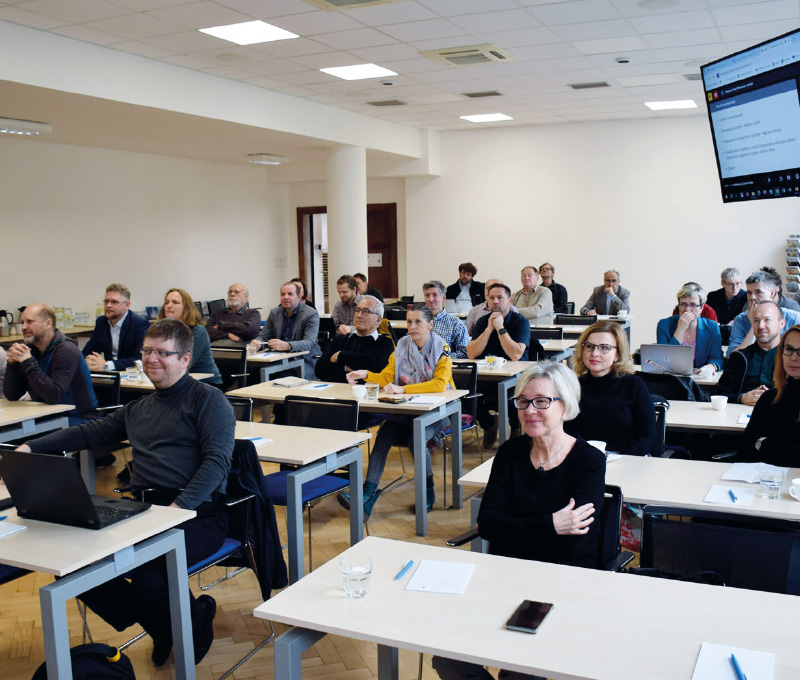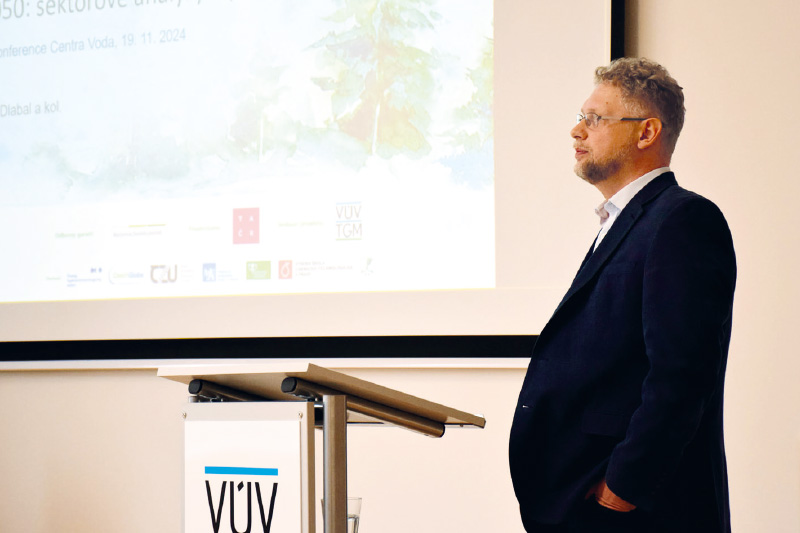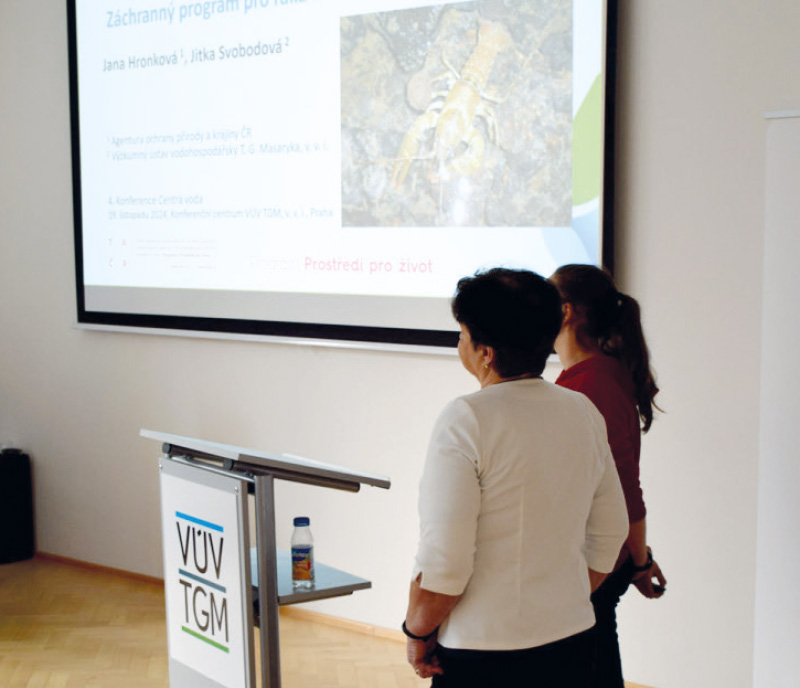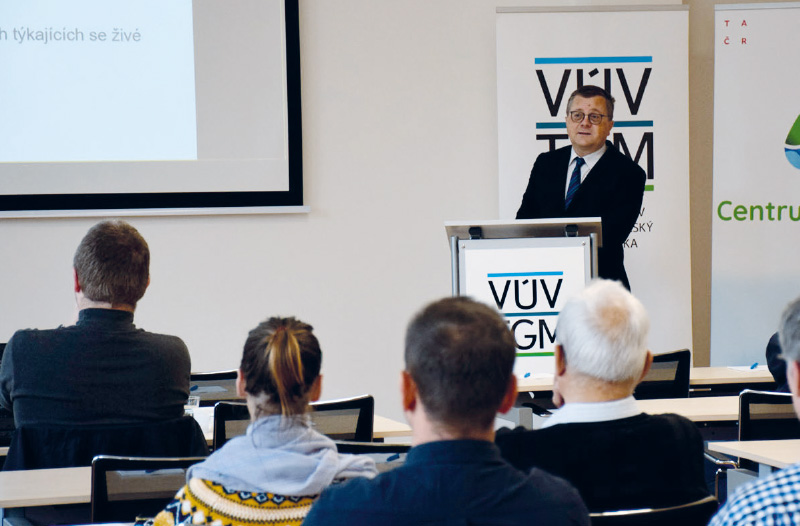The Environment for Life programme, funded by the Technology Agency of the Czech Republic, has created research centers focused on environmental issues. One of them is the “Water Centre”, which is the acronym of the “Water Management in the Czech Republic in the Context of Climate Change” project. The lead organization is T. G. Masaryk Water Research Institute, p. r. i. (TGM WRI). Other seven partner organizations are the Nature Conservation Agency of the Czech Republic (NCA CR), Czech University of Life Sciences (CZU), Czech Technical University in Prague, Faculty of Civil Engineering (FCE CTU), Czech Hydrometeorological Institute (CHMI), CzechGlobe, The Silva Tarouca Research Institute for Landscape and Ornamental Gardening, p. r. i. (VÚKOZ), and the University of Chemistry and Technology, Prague (UCT). The project duration is from July 2020 to December 2026, so currently halfway through its duration.
“Water Centre” deals with defining future needs and issues in the field of water management and water protection (including the impact of climate change) and possible measures to meet these needs and minimize problems.
Interesting solutions and partial results are presented annually at the “Water Centre” conferences. The fourth conference took place at the TGM WRI on November 19, 2024. The morning presentations focused on more comprehensive topics, as two work packages (WP) were to be completed in 2024.
In WP 1, the research team addressed the questions of how much water will be available in the future, how much will be needed, and where the biggest problems with securing it will arise. The analyses cover a longer time period, but the main conclusions were formulated for the year 2050. Prof. Miroslav Trnka from the CzechGlobe presented current climate change scenarios and their use for forecasting water availability. Dr. Adam Vizina compared the results of hydrological balance forecasts provided by global climate models (GCM) and the regional model ALADIN, and Ing. Ladislav Kašpárek, CSc., supplemented this presentation with a brief summary of how, from today’s perspective, predictions from older climate models from the 1990s have come true. Ing. Jiří Dlabal summarized scenarios of future water needs by individual sectors of human activity (water consumption by the population, in crop and livestock production, in industry, and in the energy sector). He pointed out that permitted water abstractions are much higher than current needs (more than double), and the use of permitted quantities would cause problems in the water balance. Ing. Petr Vyskoč presented the results of the comparison of future water resources and needs and pointed out in which areas the greatest water shortage can be expected in the Czech Republic. The search for adaptation measures that can respond to these findings is mainly addressed by WP 3, which is currently being solved. The summary report for WP 1 was completed at the end of 2024 and published.
Fig. 1. The floor is given to Dr. Adam Vizina…
Fig. 2. …and Ing. Ladislav Kašpárek, CSc.
Fig. 3. View into the hall
The recently completed WP 6 focused on the search and assessment of sources of surface water pollution, focusing on nutrients, polyaromatic hydrocarbons, and heavy metals. The research team organized a workshop on this issue in September 2024. At the “Water Centre” conference, Assoc. Prof. Ivana Kabelková from FCE CTU presented the results of the assessment of point sources of pollution from the pilot urbanized area of the town of Pečky. Based on a series of detailed measurements, the proportion of pollution entering surface waters through wastewater treatment plant (WWTP) discharges, from floodways, and also from storm water overflows was shown. Subsequently, Mgr. Silvie Semerádová summarized all key findings from this work package. A draft version of the summary report was published on the project website, the final version is available from the end of 2024.
The afternoon presentations were devoted to topics from other work packages.
Dr. Jan Bindzar from UCT, outlined the theses of the prepared methodology of possible progressive procedures and techniques for reducing pollutant concentrations in industrial wastewater, which are not commonly detected in urban WWTPs. It turns out that technologies for removing specific pollutants purify the water to such an extent that it is too clean for sewage and has rather the character of ballast water, and therefore its reuse should be considered.
Dr. Josef V. Datel talked about the use of artificial infiltration to replenish water sources (especially in the Káraný water treatment plant) and showed a selection of locations in deficit areas where the possibility of controlled groundwater replenishment will be assessed in more detail in the future.
Dr. Pavla Štěpánková analyzed possible approaches to defining the active zone of floodplains, which was commissioned this year as operational research within the “Water Centre”. She then used examples to show how the results differ according to individual methodologies. The conclusions serve as a basis for the Ministry of the Environment decision on changes to regulations.
Ing. Jana Hronková from NCA CR and Dr. Jitka Svobodová presented the rescue programme for the stone crayfish, which was created based on the results of research conducted by the “Water Centre” and was approved by the Ministry of the Environment in July 2024.
All presentations are published on the “Water Centre” website, where a video recording of the conference is also available (www.centrum-voda.cz).
Fig. 4. Ing. Jiří Dlabal
 Obr. 5.
Obr. 5.
Fig. 5. Presentation of Dr. Jitka Svobodová and Ing. Jana Hronková
Fig. 6. Author of the paper and the project researcher Ing. Jiří Kučera
All presentations are published on the “Water Centre” website, where a video recording of the conference is also available (www.centrum-voda.cz).
The fifth “Water Centre” conference will be held in autumn 2025.
An informative article that is not subject to peer review.

